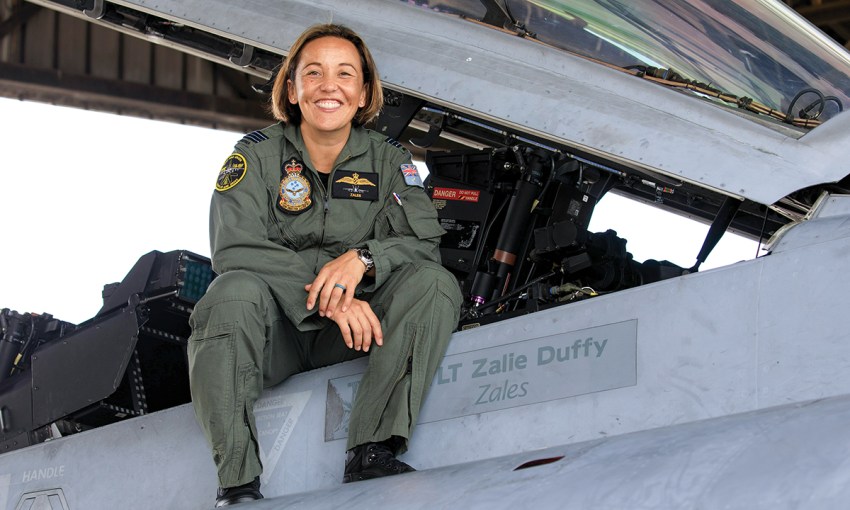Since taking to the air 20 years ago, Squadron Leader Zalie Duffy hasn’t looked back, other than to spot bandits on the tail of her F/A-18F Super Hornet.
Adelaide’s supersonic aviator
A distant split-second rumble is the only warning you get. The heavens suddenly explode overhead, and a bone-rattling shockwave sends people diving for the ground or covering their ears. Looking skyward for the source of the thunderous boom, the supersonic jet is already long gone, moving faster than the sound dragged behind in its wake.
The fleeting experience of a fast jet flyover is as close as most will get to the all-powerful F/A-18F Super Hornet which stars in Tom Cruise’s new action flick, Top Gun: Maverick. The Super Hornet can reach frightening speeds up to 2000km/h (almost twice the speed of sound), manoeuvre so fast it could make its crew black out and deliver devastating laser-guided payloads with pinpoint accuracy.
The Royal Australian Air Force (RAAF) has 24 Super Hornets, which were purchased from America for $6 billion a little over 10 years ago. Only the best air crew find their way into the cockpit and it’s a privilege and responsibility not lost on Squadron Leader Zalie Duffy.
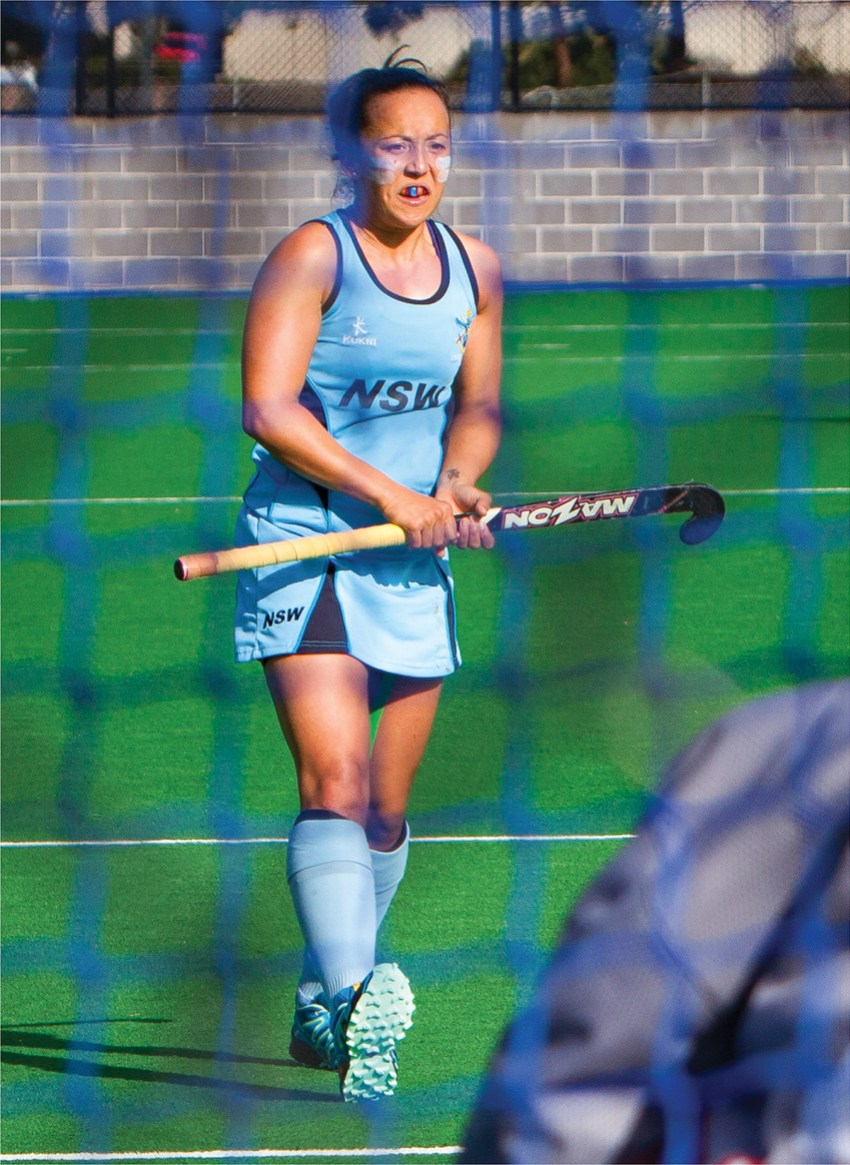
With this year marking 20 years since she began flying jets in the Air Force, Zalie’s job has taken her all over Australia; most recently a four-year posting with the Super Hornets at Amberley base, outside Brisbane.
Earlier this year, Zalie retired her flight suit to take up a temporary non-flying role accompanying her husband Steve in the United States, but she hopes to fly again.
“It is a lot of very hard, demanding work but I love it. I’m very fortunate to have had the opportunity to fly because it’s indescribable just how much fun it is. Sometimes I pinch myself and think, ‘Wow, I’m getting paid to do this, it doesn’t seem like a job’,” Zalie says.
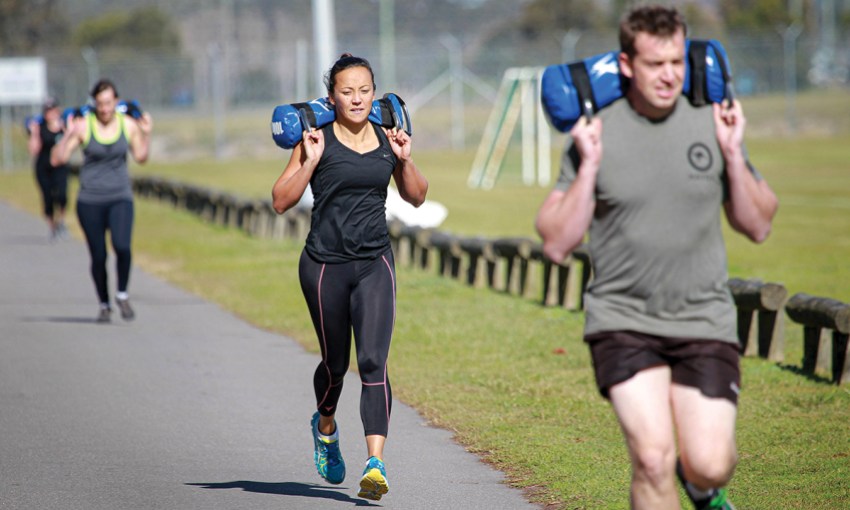
Zalie grew up in Adelaide and went to Marryatville High School, where she played hockey and softball and excelled at maths. During school she applied for a scholarship at Canberra’s Australian Defence Force Academy (ADFA) to become an intelligence officer but discovered that role wasn’t for her.
“It didn’t make my fun-metre go off the charts and someone told me about these things called navigators; they’re very similar to pilots but have other duties in the aircraft. They said my strength in maths would be good and it’s adventurous and adrenaline-fuelled because you’re going flying every day,” says Zalie.
After completing ADFA with a Bachelor of Science specialising in maths she undertook an 18-month navigator course and qualified on the now-retired F111 jets.
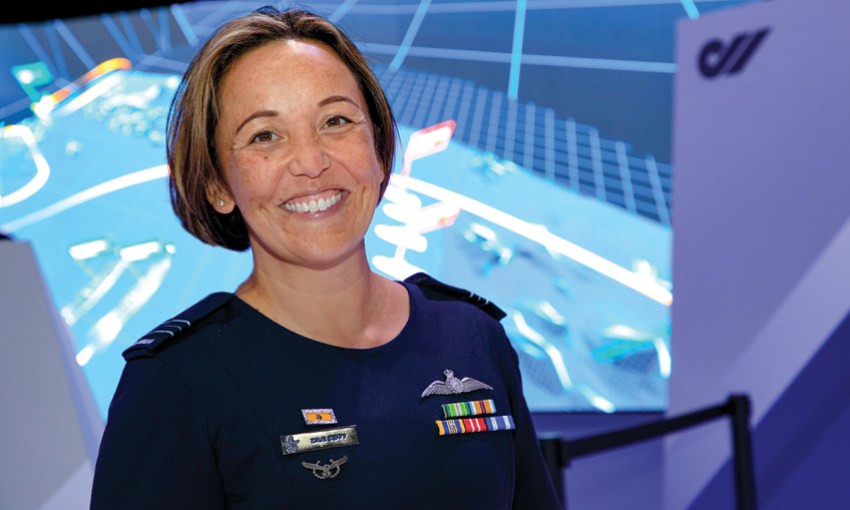
“Joining the military and then flying just suited my personality – it seemed fun to start with and I’m still having fun. Military life is different, but I was an only child, so I always had to be responsible and help out around the house. It wasn’t a shock to iron my clothes or make my bed. Then the physical side; I loved it. Who doesn’t love a good obstacle course, running around a gym or playing hockey?”
Flying has taken Zalie all around Australia as she has continued to progress her skills and rank through the Air Force. There’s been training in survival, how to escape an aircraft wreck underwater and high-G training in a centrifuge just as the astronauts do. In 2011, she was deployed to Afghanistan as a Payload Operator, remotely operating Heron surveillance drones.
In 2018, she trained as a Weapon’s Systems Officer (WSO) to join the air crew operating Australia’s new fleet of Super Hornets. Nicknamed a “back-seater” or “wizzo”, the WSO sits behind the pilot and has a range of jobs that include various laser-guided weapon systems. “A navigator or WSO is the mission commander, whereas piloting is a different skillset with hand and foot coordination and making quick decisions,” she says.
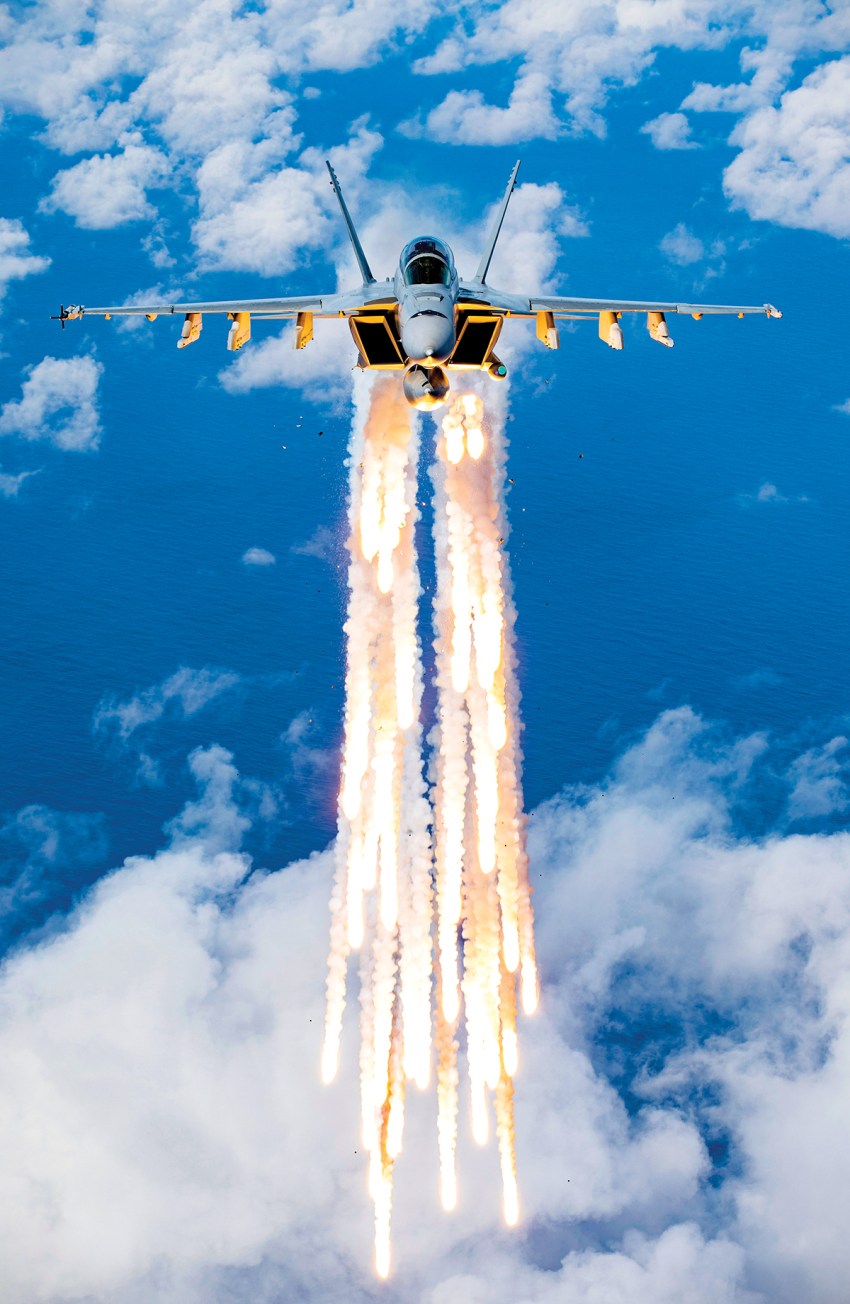
“When you’re flying as a back-seater, you don’t look up too often; you’re working pretty hard monitoring screens, communicating or writing things down.”
There’s no spontaneous buzzing the air traffic control tower like in the 1986 Top Gun, but the premise of the training is the same: putting air crew under highly stressful situations to be prepared for the real thing.
“It’s training for what we don’t want to happen – high-end tactical scenarios so that we don’t learn the hard way, giving ourselves the best chance of success and survival,” says Zalie.
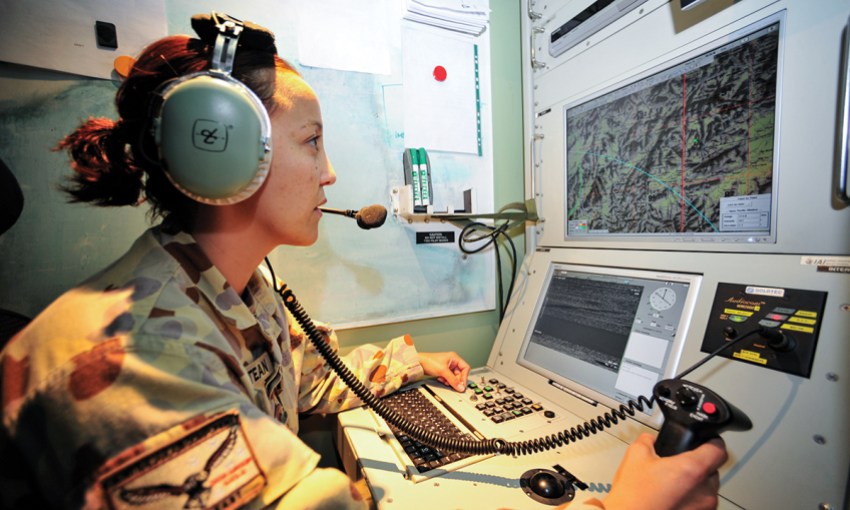
“We don’t ever go up just for a joyride, everything has a purpose. We have so many mission sets that we can do on any given day.”
One training scenario is a dogfight with another Super Hornet, whereby the pilot manoeuvres the jet under high-G-forces to evade a hostile enemy aircraft – a bandit – while the WSO tries to locate it visually.
“You’ve got to know how to manage your breathing and straining so that you can still function and provide good information to the front seat. The pilot is working hard to stay conscious and put the aircraft in the right piece of sky and I’m looking out the back to find the bandit who’s trying to shoot us down, or pretend to,” says Zalie.
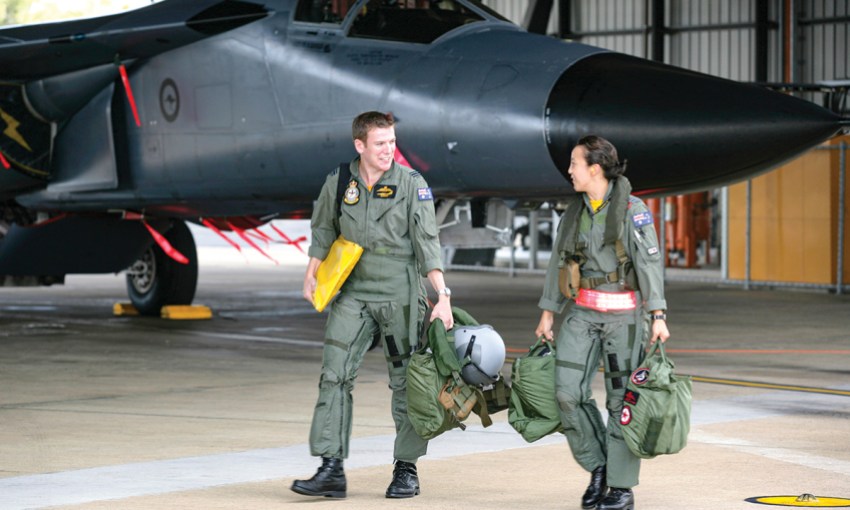
G-forces can come on quickly, pushing blood away from the brain, heart and eyes. Momentary loss of colour vision is called a grey-out, which is followed by tunnel vision and then a black-out. Training enables crew to avoid this all happening.
“The thrust coming out of those engines is phenomenal. On any given mission, we’d easily pull five-G which means everything weighs five times as much,” she says.
“Our G suits inflate to help keep the blood from pooling in our feet and legs and pushes it back up to our head and our heart, stopping us from losing consciousness or blacking out.
“You’re sweating like a champion and thinking: ‘Oh my goodness, I’m working so hard right now’, but at the end, it’s awesome to know we’ve successfully flown the aircraft as it’s supposed to. The debrief often goes for twice as long as the actual flight, but that’s where all the learning happens. By studying the aircraft, you learn when it’s vulnerable or when it’s in a good position.
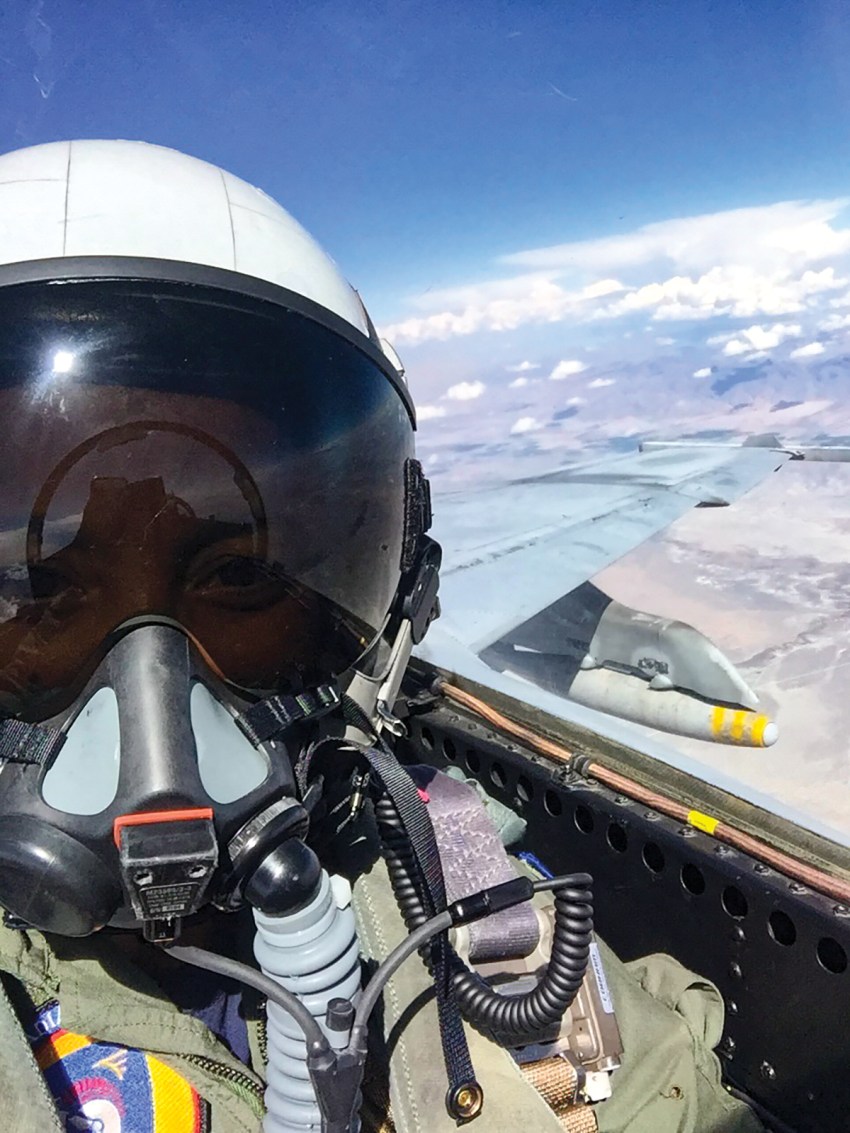
“It’s amazing when you do get time to look around. Flying on the coast is always very rewarding. In Queensland, after we’ve had rains, it’s just super green and the rivers are swollen, that always looks great.”
Women are a minority in the fast jet world, with men making up some 90 per cent of air crew. While some situations are intimidating, such as giving a mission briefing to a room full of men, Zalie finds the culture to be very accepting and “a big family” overall.
“I’m putting my life in my pilot’s hands when we go flying, so I have to trust them and they’re trusting me to do my job. Most of the guys are wonderful to work with,” she says.
“The challenge of being female is that it seems like everything on an aircraft is designed to be male. How do you go the toilet when you’ve got a guy sitting next to you and vice-versa? Logistics like that make you notice that it’s a world not always designed with women in mind. You have to come up with innovative solutions to things that you might otherwise take for granted.”
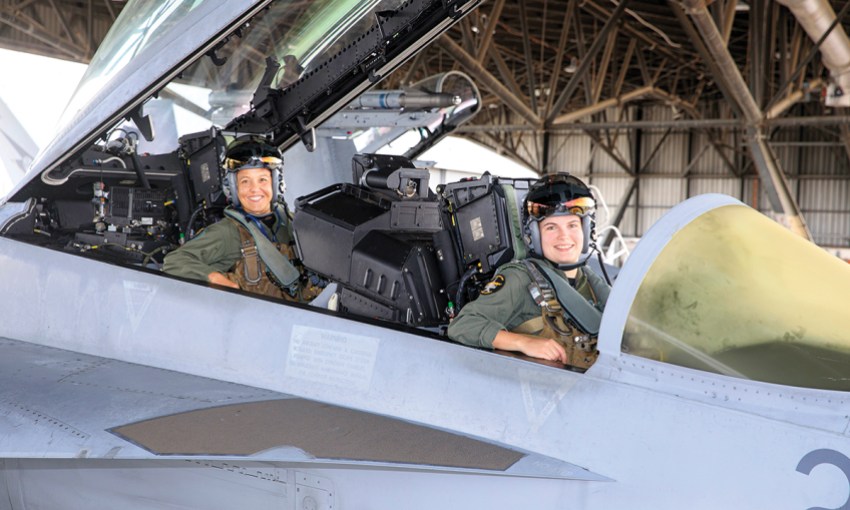
The job comes with hard work and discipline as well as other challenges of a career in defence. Zalie’s husband Steve also works in defence and the couple has spent long periods of time apart, either posted to bases on different sides of the country or on deployment to warzones.
“There is hard work involved and you are away from home and creature comforts that you’ve grown up with, but it just affords so many eye-opening experiences and opportunities. It’s not for everybody, but it is for a lot of people. I’ve travelled to different countries and parts of Australia where I’ve met great people and learnt so much. It’s certainly great for your personal and professional development. I feel very fortunate,” says Zalie.
While her career has been a blur at times, Zalie has tried to soak up as much of it while she can.
“Overall, I’m proud of my service, really. It’s given me some great opportunities and memories. I’m making the most of everything and I’m just proud to be a part of it.”
This article first appeared in the August 2022 issue of SALIFE magazine.



